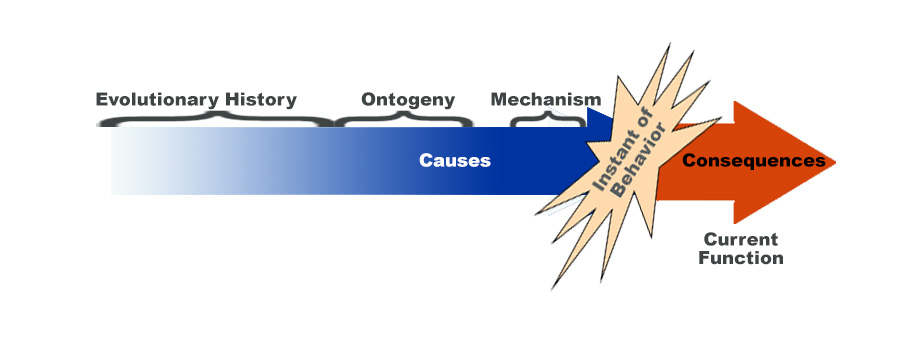3.10 Updating Tinbergen: Bergman and Beehner
In the spring of 2021, a new article sought to revise how we organize Tinbergen’s Four Questions. In their article aptly titled “Leveling with Tinbergen: Four levels simplified to causes and consequences,” Bergman and Beehner (2021) argue that Tinbergen never intended for the questions to be laid out in the traditionally taught quadrant format. Instead, they cite other work by Tinbergen suggesting that the intention was to provide a time scale approach (Figure 3.8) to explain how a behavior arises in the body (mechanism/instant); how a behavior emerges across the lifespan (ontogeny/intergenerational); and how or why it evolved (phylogeny/evolutionary time). The authors then argue that the current function (adaptive value) is a consequence of these varying time scale explanations.

This view of Tinbergen more closely aligns with the extended evolutionary synthesis. The intergenerational view of ontogeny embraces what we now know about transmission of traits from mother to child, and from grandmother to grandchild. It also integrates the potential for microevolution in mechanism as a response to medications, hormones, and other biochemical processes that can impact how an individual responds in a specific point in time. By exploring Tinbergen’s Four Questions in new ways, we are able to look at the “why” and “how” of behavior through varying degrees of resolution – instants, minutes, months, years, and eons.
This revised approach is also more in line with Life History Theory. By focusing on the evolutionary history (phylogeny), the interplay of gene-environment interactions during development (ontogeny), and the physiological responses to a stimulus (mechanism), we can better deduce the current function (adaptive value) of the behavior and why it occurred.

